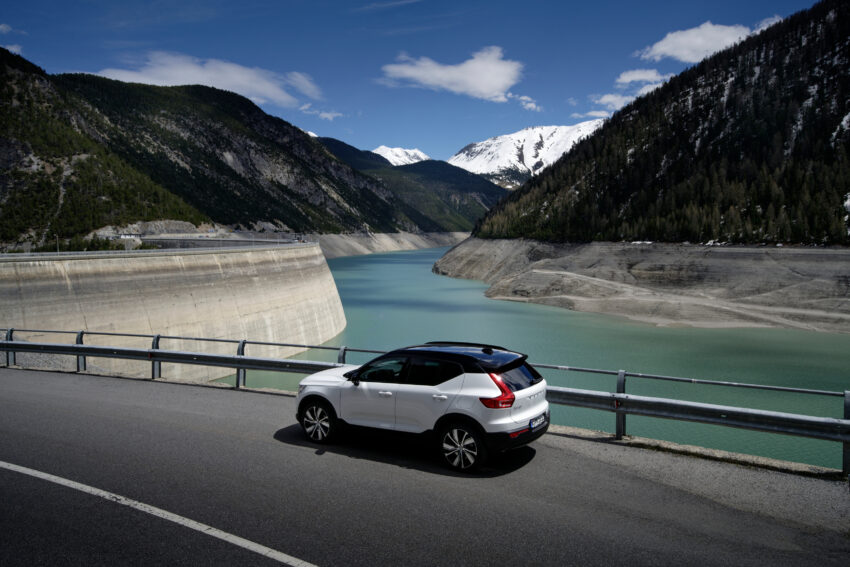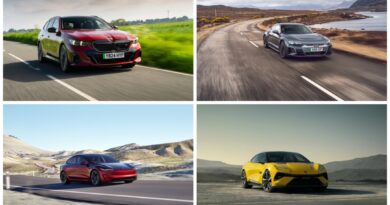The top ten EV friendly countries
More than 6.5 million electric vehicles (EVs) have been sold worldwide – and this number is expected to grow significantly over the next decade.
It can only be accelerated by the sale of new petrol and diesel cars being phased out around the world from as soon as 2025, with Norway taking the lead. The UK is targeting 2030, with the EU’s 27 member states EU aiming for 2035.
In anticipation of this, Forbes Advisor’s car insurance experts have looked into EV-readiness among developed nations, to see which countries are best suited to EV drivers.
We’ve ranked the world’s most technologically advanced countries from 1 (best) to 25 (worst) on five key EV-relevant metrics:
Number of EV sales in 2021
Number of charging points per capita
Average price of electricity
Percentage of energy from renewables
Road quality.
The countries were then awarded an overall score based on their average ranking across the five metrics – so the closer to an overall ranking of 1, the better the country’s overall EV-readiness.
Switzerland
At present a quarter (25.5%) of newly registered cars in Switzerland are electric rechargeable models, and the aim is to increase this to 50% by 2025. The government has also pledged to double the number of public-access electric charging stations within three years.
Austria
With a population of just over 9 million, Austria scored highly for road quality and renewable energy, and finished an EV readiness score of 7, the same as Switzerland. However, Switzerland recorded higher EV sales and a higher number of EV charging points, which saw it move just above Austria in the rankings.
Denmark
Sales of electric vehicles in Austria and Denmark, the second and third ranked countries, have more than doubled over the last couple of years. Denmark has also announced plans to achieve climate neutrality by 2050, and is introducing a number of climate friendly transportation changes, including the objective to run only fossil-fuel-free domestic flights by 2030.
Luxembourg
Despite being the most expensive place to charge an electric vehicle, with electricity costing seven times as much, at $0.35 per KWH and a fully charged vehicle costing an average of $19.25, Luxembourg finds itself fourth. This is thanks to the highest score on the list for EV sales, and solid ratings for charging points, renewable energy and road quality.
Norway
Last year, Norway had the highest number of EV sales per capita, with 20 cars purchased for every 1,000 people, accounting for 65% of all car sales. The high numbers could be attributed to the government’s long-standing EV incentive scheme, which means drivers are exempt from various purchases taxes and VAT (25% of car value), as well as annual road traffic insurance tax. Despite the high number of sales, Norway did score badly for the price of electricity and for road quality, meaning it has to settle for fifth.
Iceland
With the smallest population on this list, Iceland recorded a score of 2 for EV sales and a perfect 1 for renewable energy, offsetting its low scores for road quality and number of charging points. Almost all of Iceland’s energy is renewable (99%), followed closely by Norway (98%). In contrast to this, South Korea ranked the lowest in this regard, using only 6% renewable energy.
France
In seventh is France, which recorded an overall EV readiness score of 10, with decent scores for the number of charging points in the country and the cost of electricity. France may climb up the list in years to come, as the country continues to see strong growth in EV sales year on year.
Sweden
Sweden completes the collection of major Scandinavian countries on this list, with an overall EV readiness score of 11 securing eighth place. Sweden’s high number of EV sales and charging points was enough to land a place in the top ten, despite underwhelming scores for road quality and the price of electricity.
Netherlands
Outside Europe, China had the most charging stations in total, with an estimated 1.1 million. However, with such a large population this equates to just 0.8 per 1,000 people, leaving the Netherlands to overtake them with an estimated 4.6 charging stations per 1,000 people. The Netherlands therefore scored a perfect 1 for charging points, and it also recorded a top score for road quality, too. However, renewable energy received a joint second lowest score of 24 and EV sales only registered a score of 13.
Germany
Germany has the largest population in the top ten, and so its score of 6 for EV sales per capita represents a significant number of electric vehicles rolling off the production line and out of dealerships. With its scores adding up to a total of 60, Germany finds itself 26 points off Switzerland in top spot. Work to be done!
The full list of the 25 most EV friendly countries
Whilst this list has broken down the ten most EV friendly countries in the world, Forbes’ full list of 25 countries gives an in-depth insight into the worldwide transition to electric vehicles:
UK ranking
Despite having one of the highest populations on the list, the UK fails to be considered one of the top 10 EV-friendly countries.
Of the five metrics analysed, the UK scored highly in the number of charging points, with 42,000 available across the country, but received the 8th worst score for road quality, ranking 17th out of 25.
Despite finishing outside the top 10 for renewable energy, the UK is well on its way to achieving its 2035 net zero green electricity target, with 42% of the country’s electricity already coming from renewable sources.
Cost of electricity
While Russia had the poorest infrastructure for EVs overall, and finished at the bottom of the table with the poorest overall ranking of 19.2, it is the cheapest country in which to charge an EV.
In Russia drivers can expect to pay $2.75 to fully charge an electric vehicle, while Luxembourg came out the most expensive at $19.25.
Renewable energy
It’s important to note where EVs are having the most beneficial effect on a country’s overall green energy consumption.
Almost all of Iceland’s energy is renewable (99%), followed closely by Norway (98%). In contrast to this, South Korea ranked the lowest, using only 6% renewable energy.5
So, while driving an EV in South Korea will undoubtedly cut emissions, charging the vehicle in the first place will still come with a significant carbon footprint.
Road quality
Dutch roads were revealed to be the best to drive on, as the Netherlands ranked number one, closely followed by Switzerland.
Dutch road conditions could be due to ~99.1%6 of the population owning a bike, meaning there are fewer drivers contributing to road deterioration.
It is clear that European countries are shaping the future of green energy. With the European Commission adopting a set of proposals for reducing net greenhouse gas emissions by at least 55% by 20307, things seem to be going in the right direction when it comes to personal and public transport.
Kevin Pratt, car insurance expert at Forbes Advisor, said: “Electric vehicles are hailed by many as a cornerstone of the green revolution, so it’s fascinating to see Europe leading the way in terms of adopting the technology and building the supporting infrastructure. But while the commitment to EVs is not in doubt, it is likely there will be bumps in the road in the coming years.
“First, persuading the bulk of a populace to help in the transition to new technology will be a challenge. It will be interesting to see how Norwegians react to the 2025 deadline for the sale of new petrol and diesel cars – and how we in the UK react in the run-up to 2030. Will we actually see a surge in combustion engine vehicle sales as these deadlines approach?
“Then there is the infrastructure. How do you ensure adequate provision of charging points, for example, especially for those living in apartment buildings and other accommodation that does not facilitate an at-home charger? And how do you manage demand if you have millions of cars tapping into a national grid at peak times?
“These and other issues sit within the two-pronged crisis formed by cost-of-living pressures and energy insecurity – can we afford to build, buy and maintain a green fleet of EVs, and will we have enough power to run them? And where will that power come from? Will we still be burning fossil fuels to generate electricity to recharge those millions of batteries?
“The momentum behind EVs looks irresistible, but it is important to stay grounded and to be ready to address awkward questions attendant on such a massive societal change.”






